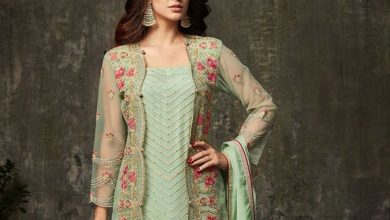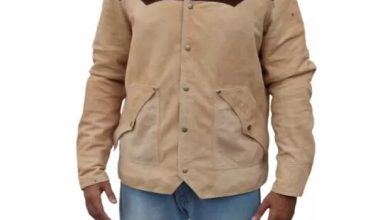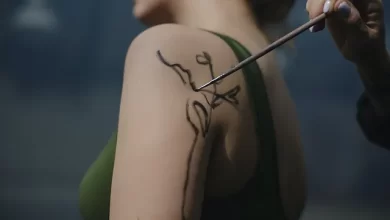How to design a t-shirt: the ultimate guide

Do you have a killer t-shirt idea and suspect others will feel the same way? Are you looking for an alternative means of promoting your business, or making some side income with merch? Do you want to commemorate a special event, like a family reunion or bachelorette party? Whatever your reasons, the fundamentals of t-shirt design remain the same; it’s what you do with them that counts.
In this Ultimate Guide to T-Shirt Design, we’ll run through each step of the design process, from the inception of an idea to getting your shirt mass-produced. No matter how much (or how little) experience you have, these t-shirt design tips will give you everything you need to know.
How to design a t-shirt in 7 steps
No matter your reason for designing a mens t shirts uk, it’ll always involve a little bit of branding. If you’re using t-shirts for promotional purposes, branding is your main goal. Even if it’s strictly fashion, you’ll still need to weave consistent brand themes into all your products. For personal use—like commemorating an event, for example—you want to make sure your t-shirt design communicates clearly.
If you haven’t already, write out a list of the key themes, styles, and personality traits you want your brand and shirts to convey. Is your brand playful or serious? Edgy or conservative? Luxurious or affordable? A focused t-shirt design can answer all of these questions at a glance.
Take a quick peek at the example above. What does it tell you about the Brewmasters company? For starters, they don’t take themselves too seriously, and the wooden instruments suggest a more traditional brewing style that hints at a classic taste. That’s a lot of information from a cartoon.
To get the most effective design, move away from your personal preference and rely more on real, quantifiable data. Who are your target clients/customers? What brand traits do they want to do business with? Here are four goals to help guide your t-shirt design process by helping you understand why you need a shirt and what you want it to do.
Promotional gifts
Your funny men’s t shirts are something you give away for free to keep your brand in the minds of prospective clients/customers.
This could be something given away at conventions, conferences, other promotional events, or even a leave-behind at a business meeting.
Internal company usage
Employees get shirts for solidarity, appreciation, or perhaps even a company uniform. The goals are similar to promotional gifts because there’s a strong need for branding. Your t-shirts are a product you plan on selling, so make sure to factor in style, marketability, and business strategy.
You’ll need to understand your shirt’s place in the market, so consider researching to discover the tastes of your customers. Your tastes are a good start, but when it comes down to selling to the masses, quantifiable data always beats guesswork. Top 6 Most Popular Bridal Dresses
Event souvenirs
Special events need special souvenirs, and t-shirts are always a great option. These share many of the same goals as shirts for internal company usage (solidarity, appreciation) but a more casual, less restrictive audience.
Regardless of their use, most t-shirts are promotional in some way. Even if you’re designing t-shirts as merchandise, include your brand logo so observers know who made the shirt if they want something similar. It should have a strong, even dominant, presence on the shirt.
Apply the same design quality and cleverness as you would a billboard advertisement. More than just clothes, t-shirts provide exposure every time a person wears them in public, especially if the owner likes the shirt and wears it often.
Once you’ve determined your goals, you can then prioritize the different aspects of your t-shirt design. For example, fashion might be a high priority for merchandise tees, but not for employee gifts. You want to tailor your design in a way that best suits your needs.
Define your budget and quantity
You’re anxious to get to the actual t-shirt design. We get it. But let’s settle some details first so you can focus your design better: namely, your budget and quantity. How much you can spend and how many t-shirts you need will impact your design.
For example, budget and quantity will help determine how many colors you can use. Depending on your printing method, additional colors may cost more money. If your budget is tight, a good way to save is conserving colors. The number of shirts you need will also influence your printing method. Some methods are ideal for printing in bulk. Others have a higher cost per shirt and are better for small orders. Before you begin to think about designing or printing, plan your budget and quantity accordingly.
Know your printing options
There are a lot of things to consider when you’re looking for the best t-shirt printing method for you. Cost, appearance, production time, materials—they’re all important. The more you know about each method, the easier it will be to decide which one is best for you. Pros: Reliable standard for printing. Affordable and high quality. Ideal for large orders over 20. Cons: New screen required for every new color or design revision (which gets costly). Colorful designs end up being expensive.
Vinyl graphics
Another method of heated transfer, vinyl printing uses more durable vinyl instead of just ink. Brainstorm your design concept. Here comes the fun stuff… Now you get to start figuring out what’s going on in your t-shirt! Make sure you don’t jump to this step first. The more time and effort you put into preparing for this, the better.
Your design could go in a million different directions. As you’re brainstorming, here are some tips to help focus your creativity. All this talk about t-shirts, and it’s easy to forget that there are lots of different types of shirts. Just to name a few…
Think about your audience and intended goals before deciding on the right type of t-shirt. A revealing crop top might not be the best promotion for a law firm. As you start sketching out t-shirt design ideas, make sure they will translate to the actual size. Design using an 18”x18” canvas and physically place your designs on a shirt. That doesn’t mean you have to fill the whole space (like if you’re keeping it minimal with a small logo), but a realistically sized canvas will help you get the proportions right.
Conclusion
Once you have your design, consider how it will look on larger and smaller shirt sizes. If you choose a screen printing process, different sizes may require different screens, which means additional costs.
Collaborating with a freelancer can be tricky, but also a lot of fun. Do your best to find a designer that thinks like you and understands what you’re looking for. Consider the designer’s personality, design style, and expertise. You can also try working with multiple designers at once by launching a T-Shirt Design Contest on 99designs.
Once you’ve found your designer(s), you have to communicate your vision. Tell them what about your design ideas, messaging, and intended audience. Include details about colors, logos, visual style, t-shirt type, and printing specifications. Send them images of designs that match the style you’re looking for. Give them everything they need to know so you can get the perfect t-shirt design.



